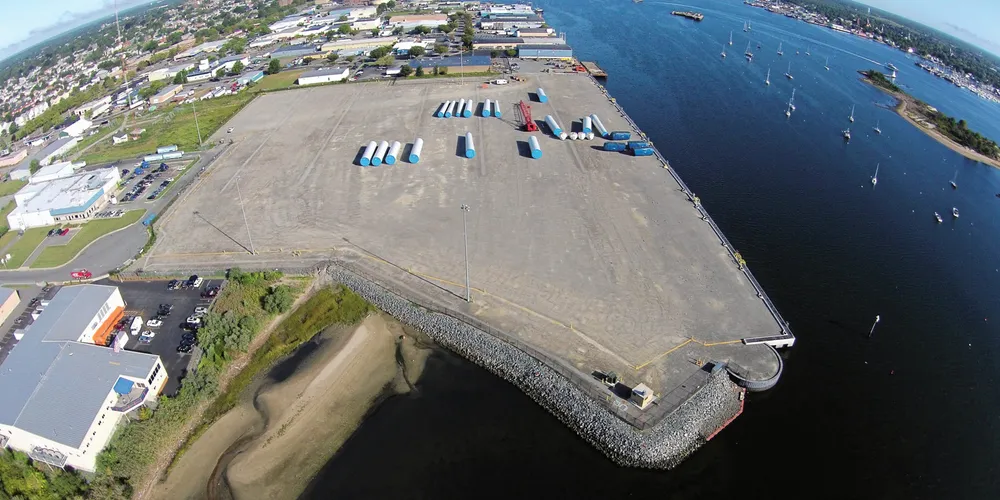'Concerted effort' | US needs $36bn investment to fill offshore wind port gap: BNOW
Trade group report says that while coastal infrastructure comprises less than 7% of total costs, it's key to unlocking clean energy development

The US is facing a massive gap in offshore wind-ready port infrastructure that could derail the sector’s development and supply chain goals, trade group Business Network for Offshore Wind (BNOW) noted in a white paper released Monday.
Meeting President Joe Biden’s sector targets of 30GW by 2030 and 110GW by 2050 will require around 110 port facilities.
These range from massive, 80-acre-plus floating wind staging and integration (S&I) hubs through 20-acre fixed-bottom marshalling ports and smaller operations and maintenance (O&M) facilities.
The remainder are at far earlier points in development or are still being investigated for feasibility.
“Without a concerted effort to change the trajectory of offshore wind port investment, the country is likely to fall short” of its capacity goals, the study said.
Filling the gap
Filling this gap will require up to $36bn in investment, including up to $7bn for marshalling capacity, nearly $8bn for S&I, around $640m in flexible laydown area, over $10bn in large and small manufacturing facilities, and nearly $6bn in O&M centres, as well as financing costs and inflation.
Even offshore wind port projects under development “are now facing material financing gaps due to construction cost escalation, which has increased between 30% and 40% over the last three years, and the commercial uncertainties associated with supporting a brand-new industry,” the report observed.
Despite these high figures, the costs represent only 3.4-6.2% of the total costs of sector development through to 2050, which BNOW sees coming in at as much as $660bn.
Building coastal infrastructure will also “directly unlock 16-to-29 times more investment in clean energy generation,” said the white paper.
“Long-term infrastructure planning and investment are needed to enable sustainable industry growth,” BNOW said, urging both federal and state support.
Without additional government funding and policy supports that incentivise private investment, “port capacity will continue to be a major offshore wind deployment constraint across the country,” the report warned.
Nine-point plan
The trade group offered a nine-point plan aimed at both directly fostering port development through government funding as well as de-risking private sector investment through strong policy support.
It urges the federal government to expand the Department of Transportation’s Port Infrastructure Development Programme (PIPD).
PIPD has already granted $130m to offshore wind related projects over the last two years but grant sizes ranging from $20m to $50m are “far below the amounts required by offshore wind port projects, both on a per project basis and in the aggregate”, the study said.
Noting that the industry has to compete for funding against other legacy port projects that have already benefited from years of federal investment, it advocates for dedicated PIDP funding specifically for offshore wind port development.
This “could help significantly reduce the short-term port funding gap, especially over the next two to three years while capital needs are still relatively modest and other policy solutions are developed”.
BNOW encourages a variety of federal and state grants and tax incentives such as ‘climate bonds’ that could be a low-cost source of debt capital for port projects.
Asset lifetimes
A key contributor to the gap in port investment is market uncertainty tied to asset lifetimes.
While offshore wind arrays have contracted lifespans of between 20-30 years, port facilities are expected to operational for at least 50 years.
“In many geographies, current procurement levels on their surface don’t justify investment in a 50-plus-year design-life asset,” said BNOW.
It prodded federal and state governments to leverage their “unique ability to credibly commit to building broad, long-term markets for offshore wind port assets.”
The federal government should accelerate its leasing of wind energy areas while states need to create clear power purchase procurement mechanisms and avoid limiting port infrastructure to single-state markets, the white paper said.
Most of the port infrastructure won’t be ne until later this decade but investors need certainty now that they can make a return on investment.
“The biggest risk hampering offshore wind port projects is the lack of long-term contracted offtake,” BNOW noted.
“State-level green banks may be well positioned to creatively build risk-mitigation tools for offshore wind port projects,” the report added.
(Copyright)